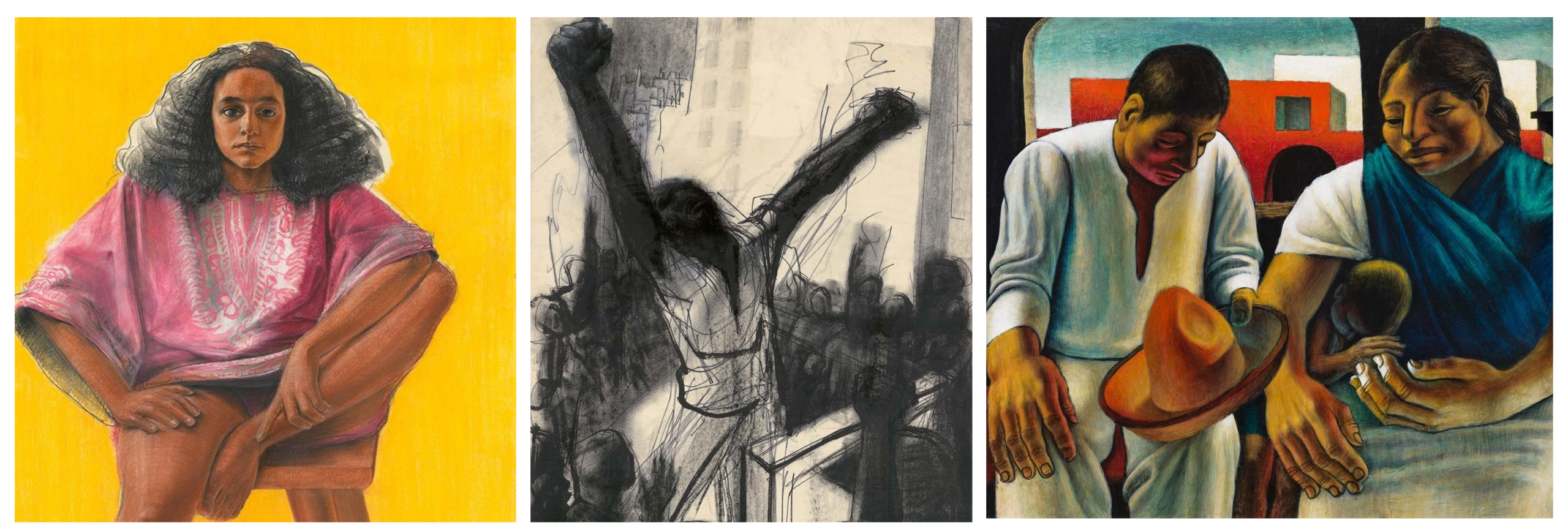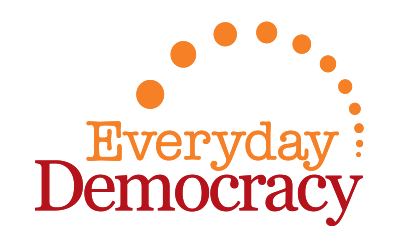Arts, Culture, & Democracy

Students view John Wilson’s iconic sculpture “Eternal Presence” during Everyday Democracy’s Arts & Democracy Lab at the Boston MFA. April 2025.
Art, Dialogue, and the Urgency of Now: College Students Reflect on Democracy Through the Work of John Wilson
In 2025, as college campuses face defunding, attacks on academic freedom, and the demonization of diversity, equity, and inclusion, students are yearning for spaces that foster purpose, meaningful connection, and ways to engage. At Everyday Democracy’s Arts & Democracy Lab at the Museum of Fine Arts, Boston, that’s exactly what they found.
“I’m new here, I had an exam today and it went really bad. Like really. And I just happened to visit the MFA and well let’s just say I had one of the best days so far,” said one attendee.
“Getting engaged made me go think about the inner child in me,” said one student. “I loved it, I enjoyed the moments I spent there drawing the arts, doing the activities, and also able to look at the amazing arts,” said another.
These reactions are just a few from the 750 Boston-area college students who attended the MFA’s annual College Night on April 10, where Everyday Democracy led our first ever Arts & Democracy Lab. Centered around the powerful exhibition “Witnessing Humanity: The Art of John Wilson,” the lab invited students to explore critical themes such as racial identity, labor, family, and civic participation. Through reflective prompts paired with selected artworks, on-site discussions led by peer facilitators, and a collective mural inspired by Wilson’s art, students connected their own experiences to questions of identity, power, justice, democratic decision-making, and community belonging.
Student-Led Exhibition Exploration
John Wilson’s work, known for confronting systemic injustice and celebrating shared humanity, served as a catalyst for meaningful engagement and reflection that merged art, dialogue, and civic action. When asked how Wilson’s work related to current social issues, students responded with insight and urgency—connecting themes in the artwork to immigration, systemic racism, representation in predominantly white institutions, and the ongoing fight for equity in today’s political climate. They discussed art not only as a form of protest, but as a bridge—sparking empathy, surfacing hidden truths, and helping communities heal.

From Left to Right: John Wilson’s “The Young Americans: Gabrielle (detail), 1975.” John Wilson’s “Oracle.” John Wilson’s “Campesinos (Peasants).” All works © Estate of John Wilson.
One student pointed out how art can make the invisible visible—shining light on histories of pain, protest, and perseverance, while also pointing toward hope and healing. “Beautifully done exhibit, forces one to look at the world around them, instead of turning a blind eye for comfort,” they said.
Everyday Democracy trained five students from Tufts University’s Tisch College for Civic Life to serve as peer facilitators, guiding reflection and helping others connect Wilson’s art to their own lives. The exhibit struck a particular chord. “I LOVED the John Wilson exhibit immensely,” said one student. “It was so cool, and I would not have checked it out myself since it was my first time there,” another admitted.
In every sketch, every shared story, and every moment of reflection, students affirmed what they—and our democracy—need most right now: spaces to imagine, to feel, and to rebuild together.

